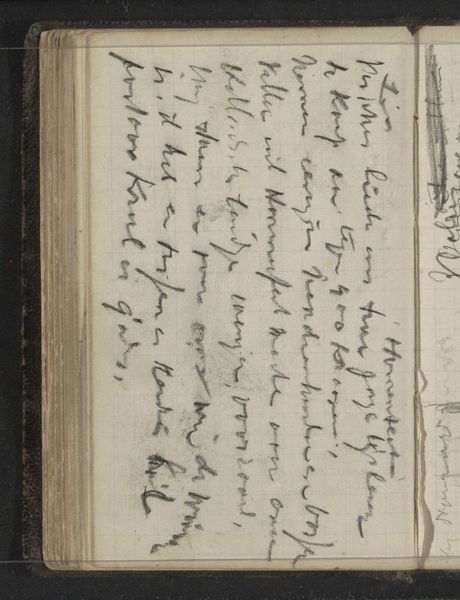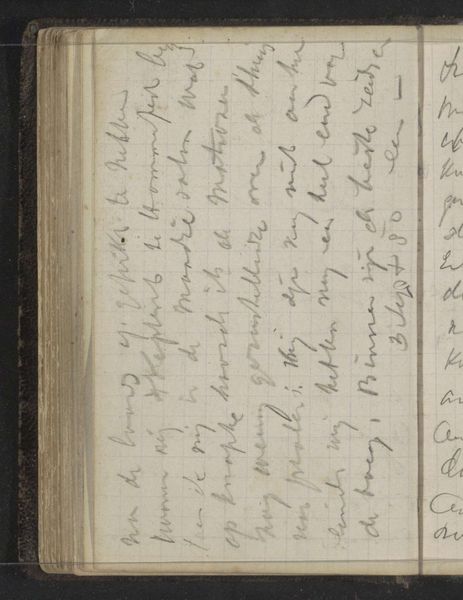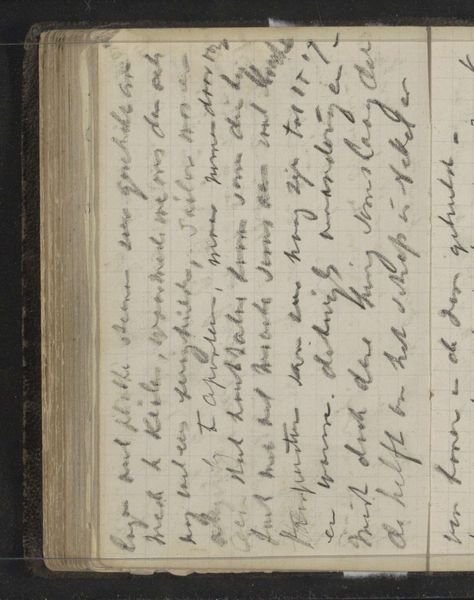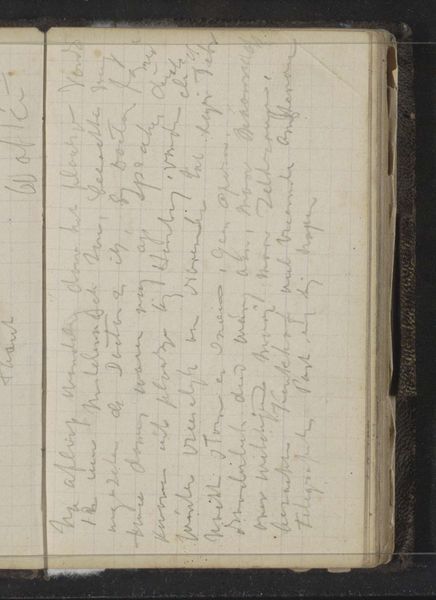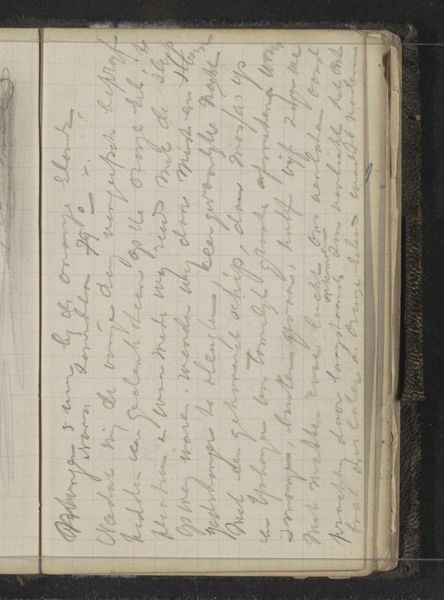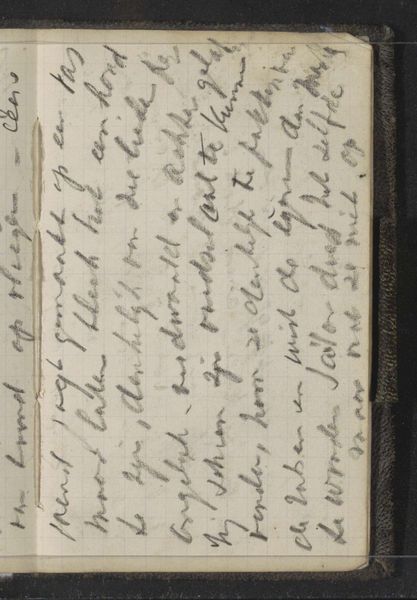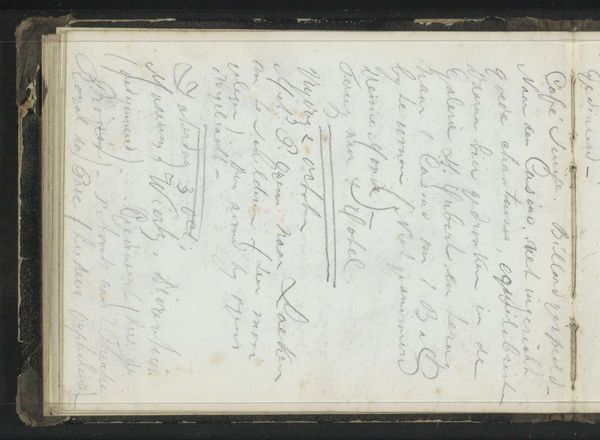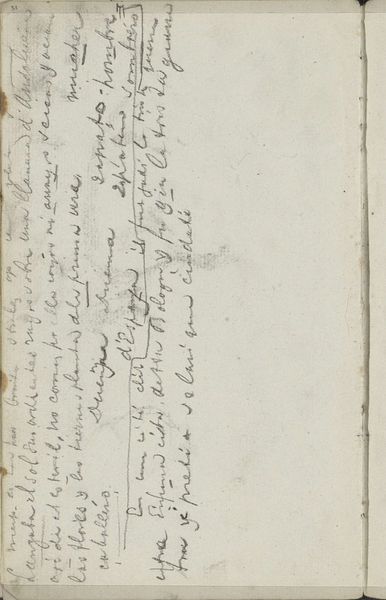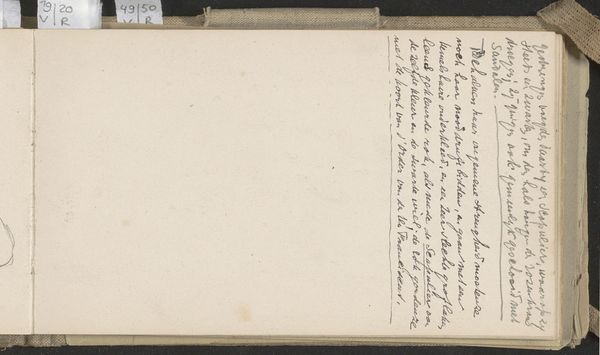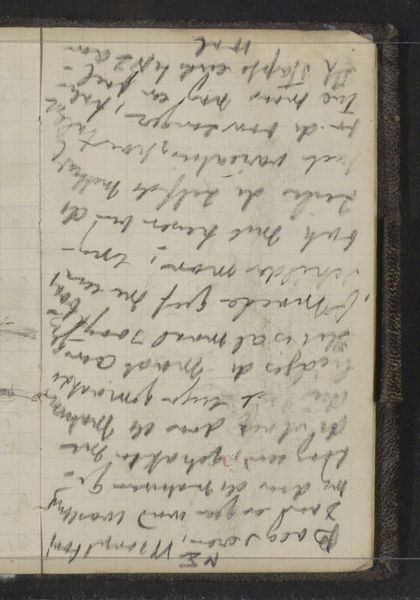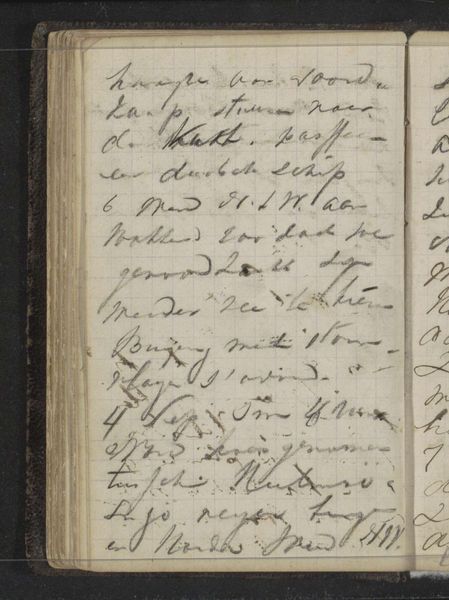
drawing, paper, ink
#
drawing
#
landscape
#
paper
#
ink
#
watercolor
Copyright: Rijks Museum: Open Domain
Curator: Let's talk about "Reisverslag" (Travelogue), a work from roughly 1880-1888 by Louis Apol, held here at the Rijksmuseum. The piece is a drawing created with ink and watercolor on paper, seemingly a page from a travel journal. Editor: My first impression is that it's rather inaccessible! The handwritten text, while perhaps evocative for the artist, doesn’t readily communicate anything to the viewer. The browned paper gives it a distant, historical feel, almost like glimpsing someone's private thoughts long after they were written. Curator: Precisely. Apol was known for his landscape paintings, especially winter scenes, yet here we see a much more intimate piece. This sketchbook page, part of a larger "travelogue", highlights the importance of travel for artists during this era. The documentation of lived experiences was important to the cultural perception of places in a period marked by expansion, industrial growth, and developing environmental anxieties. Editor: And I'd argue this very inaccessibility offers an opportunity to discuss the relationship between the artist, their journey, and the creation of knowledge. Who was this "travelogue" intended for? How does Apol’s documentation of, what appears to be an industrialized landscape, feed into contemporary debates around exploitation and environment? We can use this almost throwaway image as a chance to tease apart wider colonial implications, by inviting audiences to ponder that very complexity. Curator: It really is the apparent candidness of it. There is something to be said for the artist to collect experiences not intended to be displayed and this journal format has inherent historical value for cultural institutions to collect. Editor: I’m just not entirely convinced! To what extent are these personal records carefully managed and self-edited? But still, this travelogue reveals Apol outside the boundaries of traditional painting which could become interesting public programming when dealing with canonical landscape art. Curator: An excellent point! That duality between intimate reflection and carefully constructed narrative surely has potential for our viewers here at the Rijksmuseum. Editor: A perspective definitely worth considering as we approach the question.
Comments
No comments
Be the first to comment and join the conversation on the ultimate creative platform.
